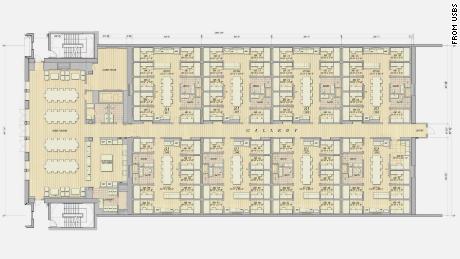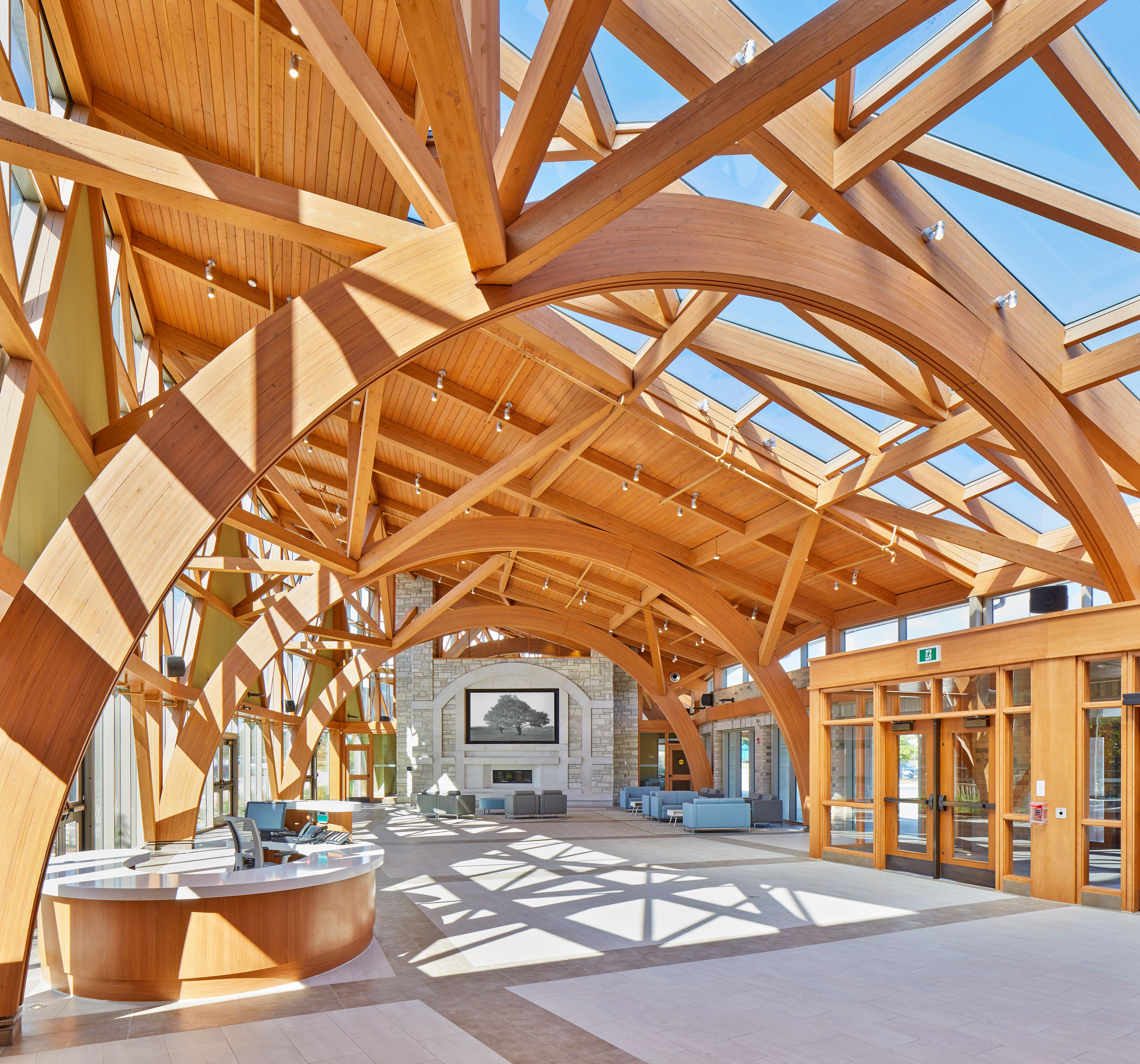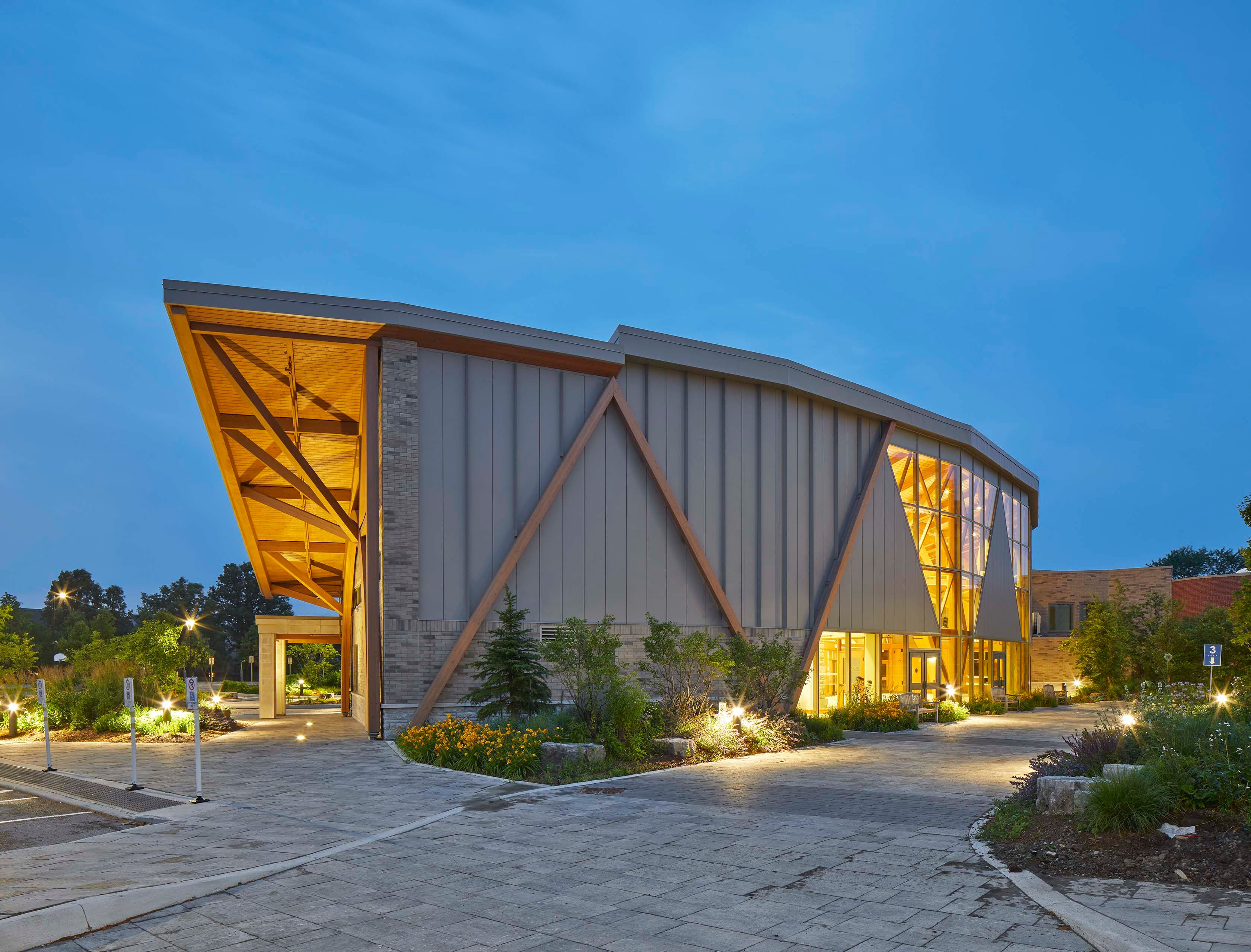Architect Tye Farrow is a leading expert in bringing neuroscience together with the built environment. His project at a Toronto Montessori School reveals just how persuasively our surroundings can positively shape us, both physically and mentally.
In October 2021, a scandal broke out in the U.S. when a consulting architect for the University of California, Santa Barbara, stepped down in protest to a plan for an 11-storey dormitory likened to a prison. Funded by billionaire Charles Munger, the layouts revealed rows of tiny windowless rooms reliant entirely on artificial light and mechanical ventilation. The architect called the proposal a “destructive social experiment” and “a place that is unsupportable as an architect, a parent and a human being.”

Munger Hall floorplan, an 11-storey dorm at the University of California, will house 4,500 students in rooms without windows.
© USBS
With so much momentum in the realm of wellness – elevated to new levels since COVID began – it is disheartening to see mega-projects like this one being constructed. After all, extensive studies have proven even modest amenities, like a balcony or a window overlooking a garden, can result in measurable mental and physical benefits, including reduced levels of stress and boredom that can lead to depression and disease.
In Toronto, another newly completed campus building takes the exact opposite approach to that windowless California dorm – its scale, form and materiality based on enhancing the neurological and psychological impact of the students and faculty who use it. In other words, its well-lit and spacious layout designed by Toronto firm Farrow Partners is geared toward physical health as well as cognitive stimulation and mental happiness.
Located in Richmond Hill just north of Highway 407, the project extends the Toronto Montessori School’s existing building, adding a gentle U-shaped volume to form an embracing entrance. Inside, various facilities fan out in both directions from a central atrium, providing washrooms, a boardroom, change rooms and office spaces for administration.

“When you introduce a curve,” says Farrow, “you introduce curiosity about what’s around the corner.”
© Farrow Partners
Among its most impactful features is the sloped ceiling supported by a series of exposed semi-circle arches. Set at a dramatic angle, the roofline rises two stories to meet a curving glass wall featuring a row of large sail-like triangular forms that face onto a courtyard and a birch tree grove.
Most architects are familiar with the benefits nature can bring to a project, whether it is unfiltered light, fresh air, or exposed raw materials like wood or stone. This project offers those features, but goes beyond what is often described as biophilia – design that brings nature into the built environment. Instead, architect Tye Farrow, who holds a master’s degree in neuroscience as it is applied to architectural design, is interested in connecting the dots between how space can influence our frame of mind and expand our sense of confidence, joy, imagination and optimism.
He coined the term “positive ambiguity” to distinguish design that increases mental capacities through spatial dynamics and complex pattern recognition. In the case of the new extension, several elements break from the usual grid. The exposed structural beams with multiple nodes, for instance, are an unexpected combination of curves and triangles that initially appear chaotic until your eye begins to identify recurring patterns. Likewise, the crescent-shaped floorplan adds another visual break from a typical straight-ahead corridor. “What our mind enjoys is differences,” says Farrow. “Our eyes and brains are programmed to seek predictability, and we’re easily attracted to straight lines and right angles. But, when you introduce a curve, you introduce curiosity about what’s around the corner.”

The building allows for a continual awareness of seasonal rhythms and weather patterns.
© Farrow Partners
Light, too, plays a critical role. Farrow describes the new wing as being “very, very moody.” At certain times of the day, the trusses cast deep shadows that have the effect of tree branches; and with natural light coming in from various sides, there is an awareness of seasonal rhythms and weather patterns. “Our minds are stimulated by comparing and contrasting,” he says. Therefore, students and faculty are continually reading the room and engaging their senses with the ever-changing conditions, so much so that it can feel as though the space is alive.
Positive ambiguity is but one chapter of a larger field of study Farrow is now a leading world expert. Referred to as cause health (or salutogenic in medical terms), he and his firm look at how the built environment can engage and enrich society by considering design through various lenses. For instance, can buildings be generous? Or, what makes a street, a town or a city authentic, and, in turn, radiate a sense of trust, resilience and importance?
If that sounds a bit like we’re talking about people rather than buildings, in many ways, cause health is just that – thinking about architecture beyond its functional services and toward its potential to make us feel vital and connected, more like friends and family than inanimate objects.
For Farrow, cause health is the ultimate test for good design. And we aren’t there yet. “Right now, architecture is interested in ecological health,” he says. The industry is focusing on making buildings more efficient with solutions like solar panels and timber construction. “But we are environmentally embedded beings. We should be looking at all aspects of health, including social, physical and mental wellness.”
Written by Catherine Osborne